History of Employee Ownership trusts
Washington State (1897)
Trust ownership is not new—as early as 1897 in Washington State, founders established a trust dedicated to the “Brotherhood of the Co-operative Commonwealth" and “for the purpose of owning, acquiring, operating, conducting and maintaining a communal industrial institution.” In 1911, the Washington State Supreme Court ruled the trust as valid in perpetuity due to the trust’s charitable educational purpose.
Columbia Conserve Company (1926)
Founded by Harvard graduate William Hapgood in 1903 with “his father’s backing,” the Columbia cannery “was acclaimed throughout the 1920s and 1930s as the epitome of enlightened labor-management relations and industrial democracy." After acquiring a small cannery and growing it for 20 years, Hapgood converted his firm to employee ownership in 1926. Under the advice of Paul Douglas, then a professor of economics at the University of Chicago (and later the U.S. Senator from Illinois), Hapgood established an EOT that would use the future profits of the firm to acquire a majority of the company’s common stock. This is essentially the same leveraged buyout mechanism that was later popularized by Louis Kelso. The transfer was complete by the summer of 1930. Under the terms of the plan, all salaried employees with at least one year of tenure, and who attended at least 50% of employee-owner meetings, were entitled to vote to elect and direct the trustees. The elected trustees would, in turn, vote as the majority shareholder in line with the employee-owners’ instructions.
At its height as an employee-owned business, Columbia had approximately 150 employee-owners. The company received wide praise. Both Hapgood and his son Powers Hapgood toured the country to speak about Columbia. Religious organizations hailed Columbia for its practice of “Christian ethics." Journalists published magazine and newspaper articles in support of the “business without a boss.” Columbia’s reputation only increased in the midst of public attention to business practices during the Depression. Yet, the Depression also brought plunging demand. And, at the same time, Campbell’s soup began an aggressive bid in the same market. As a result, “between 1931 and 1932, Columbia’s sales dropped by 35.9%,” bringing a net loss to the company. Columbia was ultimately sold to a food processor in 1953, “exactly 50 years” after the company’s founding.
John Lewis Partnership (1950)
The best-known EOT company is John Lewis Partnership, which is one of the biggest and oldest EO businesses in the world. The firm was founded in the late 1800s and transitioned to full employee ownership in 1950 by the founder's son, John Spedan Lewis. It currently has 95,000 employee-owners. All employees are owners on day one of employment. Also, all employee-owners at John Lewis have equal voting rights. A copy of the company's "Constitution" is available online. John Lewis may be likened to the Macy’s of the UK––a very upscale department store chain. Also part of the employee-owned conglomerate is Waitrose, a high-end supermarket chain, which was acquired by John Lewis Partnership in 1937.
Rise of the ESOP (1956)
Louis Kelso leverages decades-old federal tax code to establish the first “Kelso Plan” at Peninsula Newspapers in 1956 and proceeds to popularize the concept––also called a “second-income plan”––for nearly two decades. In 1974, Kelso persuades U.S. Senator Russell Long to allow for the continued use of such plans under the Employee Retirement Income Security Act (ERISA) and they came to be called Employee Stock Ownership Plans (ESOP). In the same year, Kelso’s senior tax associate John Menke, who helped to draft the initial ESOP legislation, opens the first “ESOP shop” to bring ESOP services to the public at large. Menke & Associates goes on to assist in the formation of over 3,500 ESOP companies and counting. In 1978, Corey Rosen founds the National Center for Employee Ownership as a national educational nonprofit that further popularizes the ESOP concept, touching tens of thousands of companies that would later go on to adopt an ESOP. And a robust professional community develops around the creation and support of ESOP companies. Although the EOT remains the mainstream form of employee ownership in the U.K. following the example of John Lewis Partnership, the EOT disappears from the U.S. scene due to the rise of ESOPs.
EOT Law (2015)
Christopher Michael P.C. (“EOT Law”) reinvents and reintroduces the Employee Ownership Trust (EOT) in the United States. After publishing original research on the EOT concept in top tax law journal Tax Notes (2015) and the American Bar Associations’s Probate & Property (2017), EOT Law also advises the first dozen U.S.-based EOTs, including Metis Construction, Equity Atlas, Paras & Associates, Optimax Systems, and Bicycle Technologies International. See our Past Clients page.







